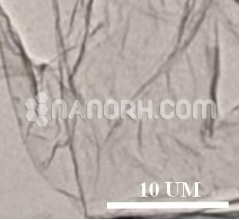| Iron Carbon Nanotubes | |
| Product No | NRE-37014 |
| CAS No. | NA |
| Purity | 97% |
| Average Diameter | >55 nm |
| Average Length | 10-30umm (TEM) |
| Special Surface Area(SSA) | 60 m2/g (BET) |
| Tap Density | 0.12 g/cm3 |
| True Density | 2.1 g/cm3 |
| Electric Conductivity | > 100 S/cm |
Iron Carbon Nanotubes
Introduction:
Iron Carbon Nanotubes (Fe-CNTs) are hybrid nanomaterials composed of carbon nanotubes (CNTs) that are functionalized or doped with iron (Fe) nanoparticles or iron-containing compounds. These nanotubes combine the unique properties of carbon nanotubes—such as exceptional strength, electrical conductivity, and thermal properties—with the advantages of iron, including its magnetic and catalytic properties.
Applications:
Catalysis:
Catalyst Support: Fe-CNTs are widely used as supports for catalysts, particularly in chemical reactions such as hydrogenation, CO2 reduction, and Fischer-Tropsch synthesis. The iron nanoparticles provide catalytic sites that enhance the efficiency of these reactions.
Magnetic Applications:
Magnetic Nanoparticles: The iron in Fe-CNTs imparts magnetic properties, making them useful in applications like magnetic resonance imaging (MRI), as magnetic contrast agents, and for magnetic separation techniques.
Magnetic Data Storage: Due to their magnetic properties, Fe-CNTs can be used in high-density data storage devices, where they offer advantages in terms of stability and magnetic sensitivity.
Energy Storage and Conversion:
Supercapacitors: Fe-CNTs are used in supercapacitors, where their high surface area, combined with the conductivity of iron, enables faster charge and discharge cycles and improves energy storage capabilities.
Battery Electrodes: Fe-CNTs have been explored as electrode materials in lithium-ion and sodium-ion batteries. The iron component helps enhance charge transfer and improve the overall efficiency and performance of the batteries.
Biomedical Applications:
Drug Delivery: Fe-CNTs can be used as carriers for drug delivery, particularly for targeted therapy in cancer treatments. The magnetic properties allow them to be guided to specific areas of the body using external magnetic fields, enhancing the precision of drug delivery.




